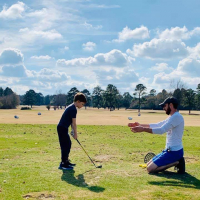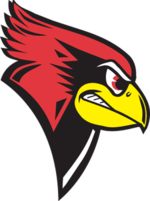The Big Picture of Biokinetics in a golf swing motion
-
Recently Browsing 0 members
- No registered users viewing this page.
-
Our picks
-

2024 Wells Fargo Championship - Discussion and Links to Photos
GolfWRX_Spotted posted a topic in Tour and Pre-Release Equipment,
Please put any questions or comments here
General Albums
2024 Wells Fargo Championship - Monday #1
2024 Wells Fargo Championship - Tuesday #1
2024 Wells Fargo Championship - Tuesday #2
WITB Albums
Akshay Bhatia - WITB - 2024 Wells Fargo Championship
Matthieu Pavon - WITB - 2024 Wells Fargo Championship
Keegan Bradley - WITB - 2024 Wells Fargo Championship
Webb Simpson - WITB - 2024 Wells Fargo Championship
Emiliano Grillo - WITB - 2024 Wells Fargo Championship
Taylor Pendrith - WITB - 2024 Wells Fargo Championship
Kevin Tway - WITB - 2024 Wells Fargo Championship
Pullout Albums
Rory McIlroy - 2024 Wells Fargo Championship
New Cobra equipment truck - 2024 Wells Fargo Championship
Eric Cole's custom Cameron putter - 2024 Wells Fargo Championship
Custom Cameron putter - 2024 Wells Fargo Championship
Matt Kuchar's custom Bettinardi - 2024 Wells Fargo Championship
Justin Thomas - driver change - 2024 Wells Fargo Championship
Rickie Fowler - putter change - 2024 Wells Fargo Championship
Rickie Fowler's new custom Odyssey Jailbird 380 putter – 2024 Wells Fargo Championship
Tommy Fleetwood testing a TaylorMade Spider Tour X (with custom neck) – 2024 Wells Fargo Championship
Cobra Darkspeed Volition driver – 2024 Wells Fargo Championship
-
- 2 replies

Picked By
easyyy, -
-

2024 CJ Cup Byron Nelson - Discussion and Links to Photos
GolfWRX_Spotted posted a topic in Tour and Pre-Release Equipment,
Put any questions or comments here
General Albums
2024 CJ Cup Byron Nelson - Monday #1
2024 CJ Cup Byron Nelson - Monday #2
2024 CJ Cup Byron Nelson - Tuesday #1
2024 CJ Cup Byron Nelson - Tuesday #2
2024 CJ Cup Byron Nelson - Tuesday #3
WITB Albums
Pierceson Coody - WITB - 2024 CJ Cup Byron Nelson
Kris Kim - WITB - 2024 CJ Cup Byron Nelson
David Nyfjall - WITB - 2024 CJ Cup Byron Nelson
Adrien Dumont de Chassart - WITB - 2024 CJ Cup Byron Nelson
Jarred Jetter - North Texas PGA Section Champ - WITB - 2024 CJ Cup Byron Nelson
Richy Werenski - WITB - 2024 CJ Cup Byron Nelson
Wesley Bryan - WITB - 2024 CJ Cup Byron Nelson
Parker Coody - WITB - 2024 CJ Cup Byron Nelson
Peter Kuest - WITB - 2024 CJ Cup Byron Nelson
Blaine Hale, Jr. - WITB - 2024 CJ Cup Byron Nelson
Kelly Kraft - WITB - 2024 CJ Cup Byron Nelson
Rico Hoey - WITB - 2024 CJ Cup Byron Nelson
Pullout Albums
Adam Scott's 2 new custom L.A.B. Golf putters - 2024 CJ Cup Byron Nelson
Scotty Cameron putters - 2024 CJ Cup Byron Nelson
-
- 11 replies

Picked By
easyyy, -
-

2024 Zurich Classic - Discussion and Links to Photos
GolfWRX_Spotted posted a topic in Tour and Pre-Release Equipment,
Please put any questions or comments here
General Albums
2024 Zurich Classic - Monday #1
2024 Zurich Classic - Monday #2
WITB Albums
Alex Fitzpatrick - WITB - 2024 Zurich Classic
Austin Cook - WITB - 2024 Zurich Classic
Alejandro Tosti - WITB - 2024 Zurich Classic
Davis Riley - WITB - 2024 Zurich Classic
MJ Daffue - WITB - 2024 Zurich Classic
Nate Lashley - WITB - 2024 Zurich Classic
Pullout Albums
MJ Daffue's custom Cameron putter - 2024 Zurich Classic
Cameron putters - 2024 Zurich Classic
Swag covers ( a few custom for Nick Hardy) - 2024 Zurich Classic
Custom Bettinardi covers for Matt and Alex Fitzpatrick - 2024 Zurich Classic
- 1 reply

Picked By
easyyy, -

2024 RBC Heritage - Discussion and Links to Photos
GolfWRX_Spotted posted a topic in Tour and Pre-Release Equipment,
Please put any questions or comments here
General Albums
2024 RBC Heritage - Monday #1
2024 RBC Heritage - Monday #2
WITB Albums
Justin Thomas - WITB - 2024 RBC Heritage
Justin Rose - WITB - 2024 RBC Heritage
Chandler Phillips - WITB - 2024 RBC Heritage
Nick Dunlap - WITB - 2024 RBC Heritage
Thomas Detry - WITB - 2024 RBC Heritage
Austin Eckroat - WITB - 2024 RBC Heritage
Pullout Albums
Wyndham Clark's Odyssey putter - 2024 RBC Heritage
JT's new Cameron putter - 2024 RBC Heritage
Justin Thomas testing new Titleist 2 wood - 2024 RBC Heritage
Cameron putters - 2024 RBC Heritage
Odyssey putter with triple track alignment aid - 2024 RBC Heritage
Scotty Cameron The Blk Box putting alignment aid/training aid - 2024 RBC Heritage
-
- 7 replies

Picked By
easyyy, -
-

2024 Masters - Discussion and Links to Photos
GolfWRX_Spotted posted a topic in Tour and Pre-Release Equipment,
Huge shoutout to our member Stinger2irons for taking and posting photos from Augusta
Tuesday
The Masters 2024 – Pt. 1
The Masters 2024 – Pt. 2
The Masters 2024 – Pt. 3
The Masters 2024 – Pt. 4
The Masters 2024 – Pt. 5
The Masters 2024 – Pt. 6
The Masters 2024 – Pt. 7
The Masters 2024 – Pt. 8
The Masters 2024 – Pt. 9
The Masters 2024 – Pt. 10
-
- 15 replies

Picked By
easyyy, -
-

































Recommended Posts
Join the conversation
You can post now and register later. If you have an account, sign in now to post with your account.